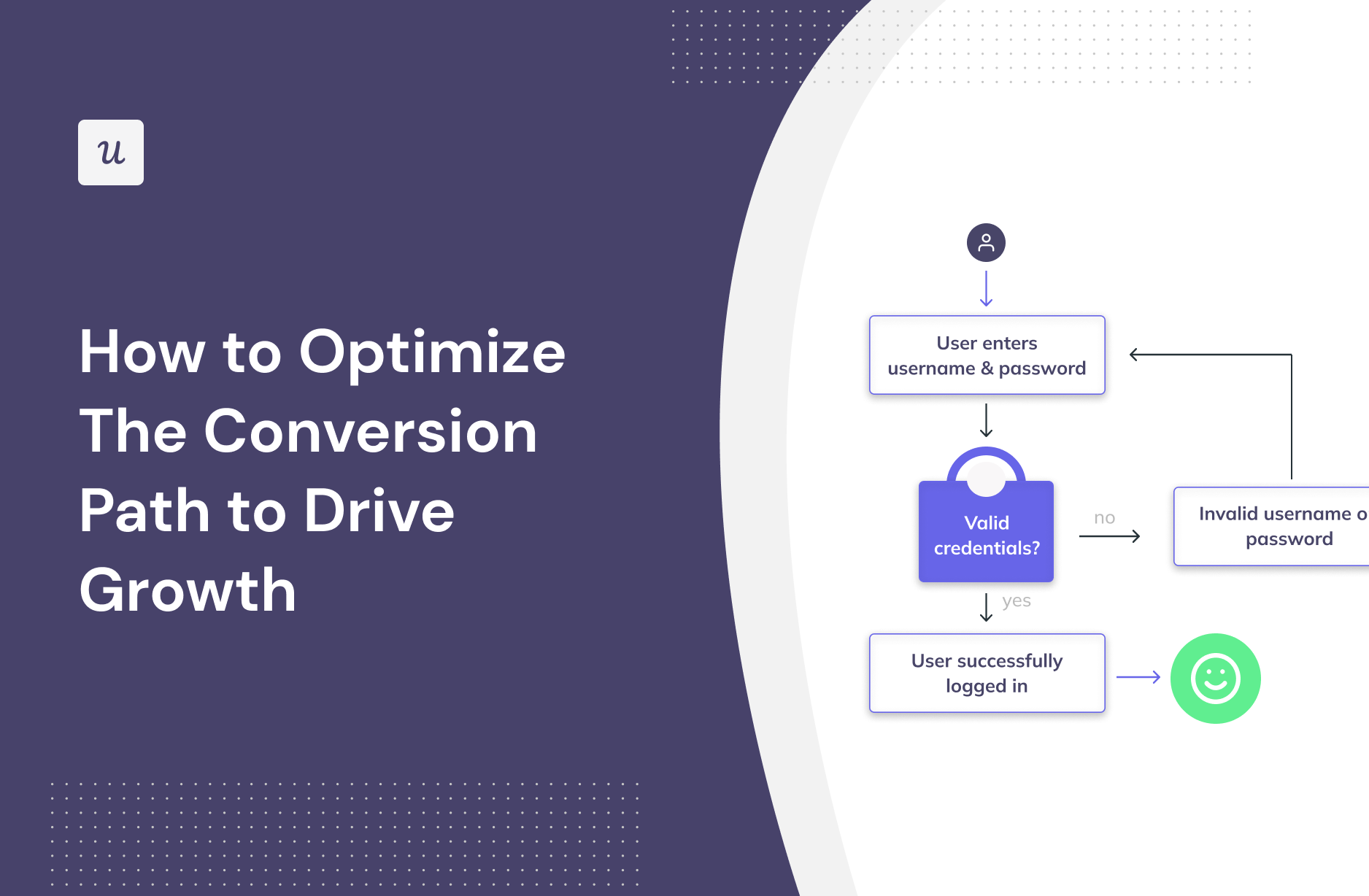
Whether you’re converting website leads from landing pages or attracting paying users, understanding and optimizing the SaaS conversion path is key to unlocking success and achieving sustainable product growth.
In this article, we examine the unique world of SaaS conversion. We will also explore strategies for optimizing different conversion paths. And discuss how you can analyze your path’s success.
Let’s dive in!
Try Userpilot Now
See Why 1,000+ Teams Choose Userpilot

What is a SaaS conversion path?
The SaaS conversion path is the guided journey that a potential customer follows from an anonymous website visitor to a subscriber to a product or service.
It is a step-by-step process that turns qualified website visitors, first into leads, and then into paying customers.
What makes a successful conversion path?
Not all conversion paths are identical. However, regardless of your business type or offering, successful conversion paths share a few similar features:
- Tailored messaging: A good conversion path features messaging that’s tailored to the specific needs and pain points of your target audience. It leverages available data on your leads and customers to personalize their experience and deliver targeted messaging.
- Value-driven content: Provide valuable educational content throughout the conversion path to build trust and establish your authority in the digital marketing space.
- Engaging Call-to-Action (CTA): An effective conversion path utilizes clear and compelling CTAs at every stage. Whether you’re inviting users to sign up for a free trial or offering website visitors a free ebook, your call to action should be prominent and persuasive.
- Compelling value proposition: To be truly successful, your conversion path must begin with a clear and compelling offer. It should communicate the benefits and unique value your product offers and how it addresses your customers’ pain points. You can create specialized website pages to do so.
- Persuasive landing page: Depending on your targeted conversion, a landing page may be a necessity. If that’s the case, ensure your landing page is persuasive, engaging, and optimized for mobile users. Its singular focus should be to emphasize your product value.
What are the steps for creating a conversion path?
For understanding conversion paths better, it’s important to understand the step-by-step process of how they are created.
- Create content to attract potential customers to your company. This can be organic through content marketing or paid through Google Ads.
- Redirect users from different channels to your landing page to convert them. Some prospects may not convert instantly, which is why you must create bottom-of-the-funnel content like case studies.
- Offer a free trial, demo, or free plan to encourage leads to sign up for your product.
- Onboard customers, guide them toward value and contextually trigger upsell messages to turn them into paying customers.
- Track user behavior through Userpilot or Google Analytics to identify drop-off points and optimize conversions throughout the conversion path.
10 best practices to create effective conversion paths
Now that we’ve seen what makes a conversion path successful, let’s take a closer look at the different SaaS conversion paths and identify the best practices for optimizing each of them.
Trial signup conversion path best practices
Getting your website visitors to sign up for your free trial is a crucial step in the SaaS customer journey.
A good trial conversion path turns visitors into leads by compelling them to test the product. And to create an optimized trial conversion path, you should:
1. Use social proof to show prospects your product’s value on your landing page
Good landing pages are key to the success of your trial conversion efforts. Create landing pages that connect with qualified website visitors and resonate with their needs.
Use social proof, such as customer testimonials, user reviews, case studies, or industry awards, to build trust and communicate your product’s value.
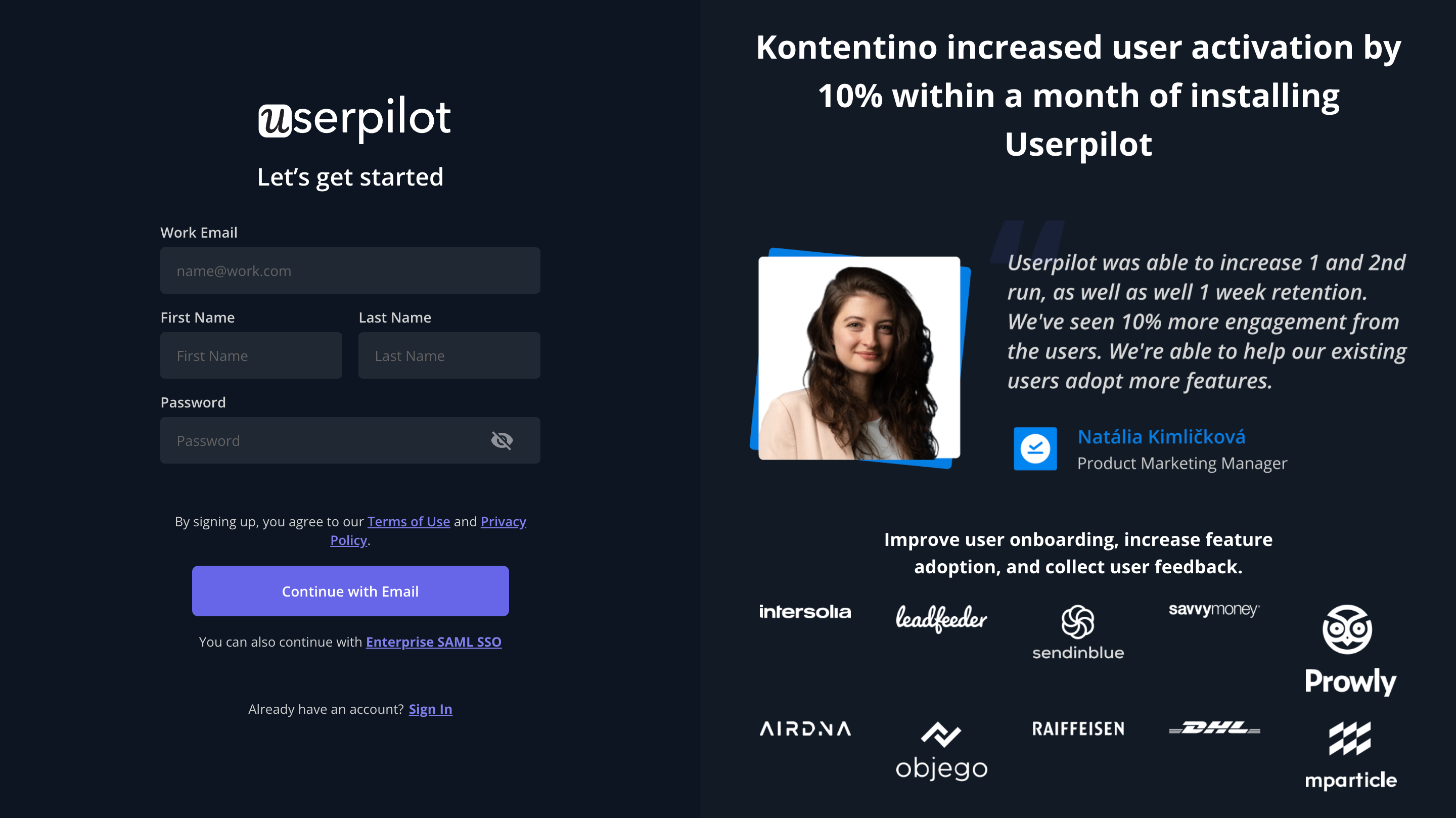
2. Optimize your pricing page
Your pricing page is where users go to see what they’ll get for their money. Ultimately, your chosen price model and price points will help users decide whether or not they’re ready to convert.
You can optimize your trial conversion path by keeping your pricing model simple and easy to understand. Your target audience should know exactly what each package includes and how it differs from others.
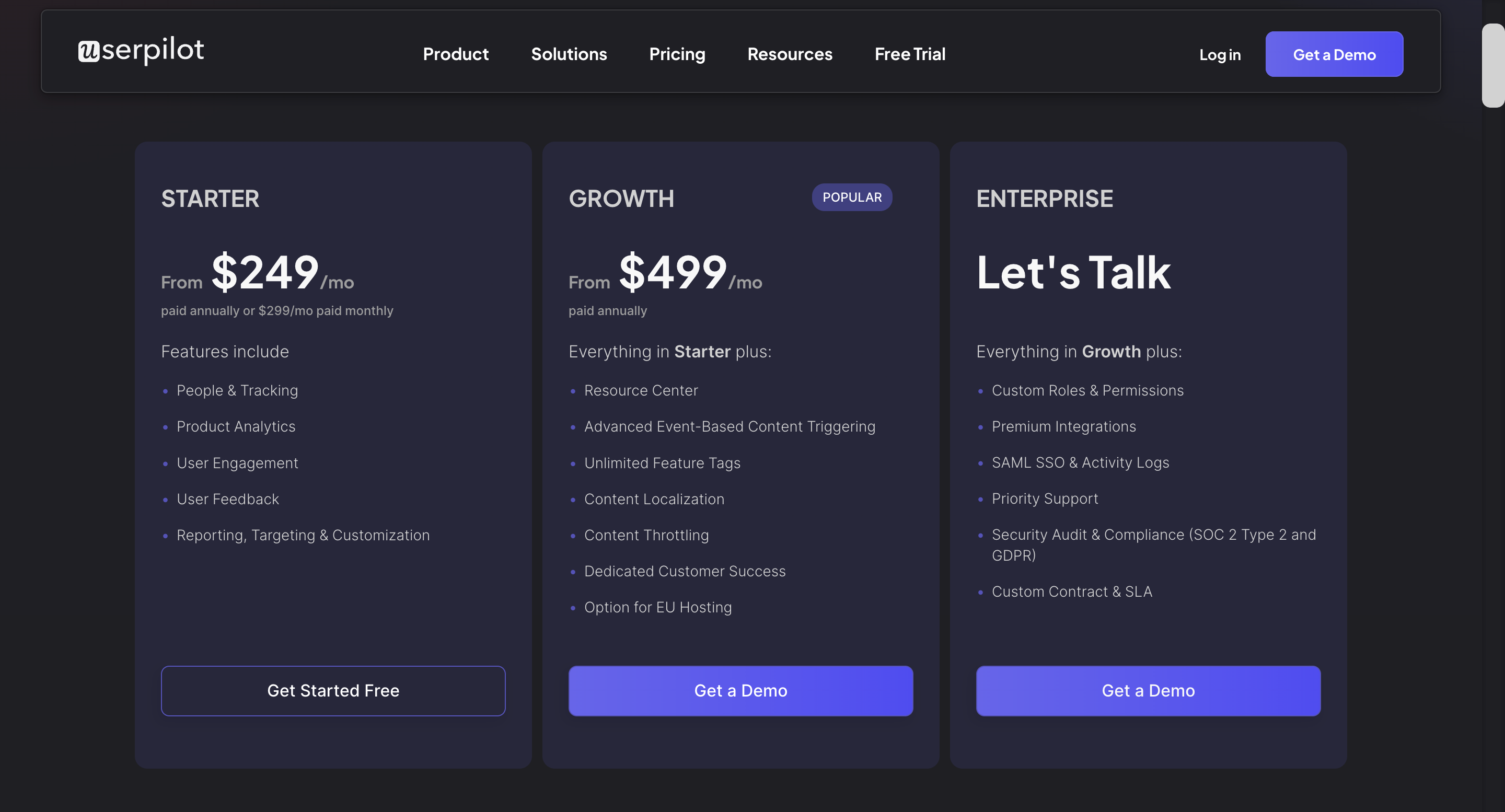
Regardless of your chosen pricing model and strategy, ensure the perceived value of your product is obvious and your pricing is justified.
3. Create a frictionless signup process
According to the State of SaaS report, 79% of SaaS products have a friction-riddled sign-up flow. Too many products, for example, still use the sign-up page as a source of a barrage of customer data.
Likewise, requesting users’ credit card information at a time when they simply want to test your product may be more trouble than it’s worth, depending on your product type and industry.
Ultimately, you want to keep the sign-up page simple. Use Single Sign-On (SSO), where possible. Otherwise, a user’s name and email are often enough to get them started.

4. Delay the email confirmation
Requiring email confirmation before a user gains access to your product often places an invisible wall between them and the product.
To ensure users start using your product as quickly as possible, you must eliminate every source of friction during sign-up. This is necessary even if you need that step for legal compliance or identity verification purposes.
Delay the email confirmation request so as not to disturb users at the start of their journey. Instead, use an in-app banner to remind them to confirm their email after they’ve already accessed the application.
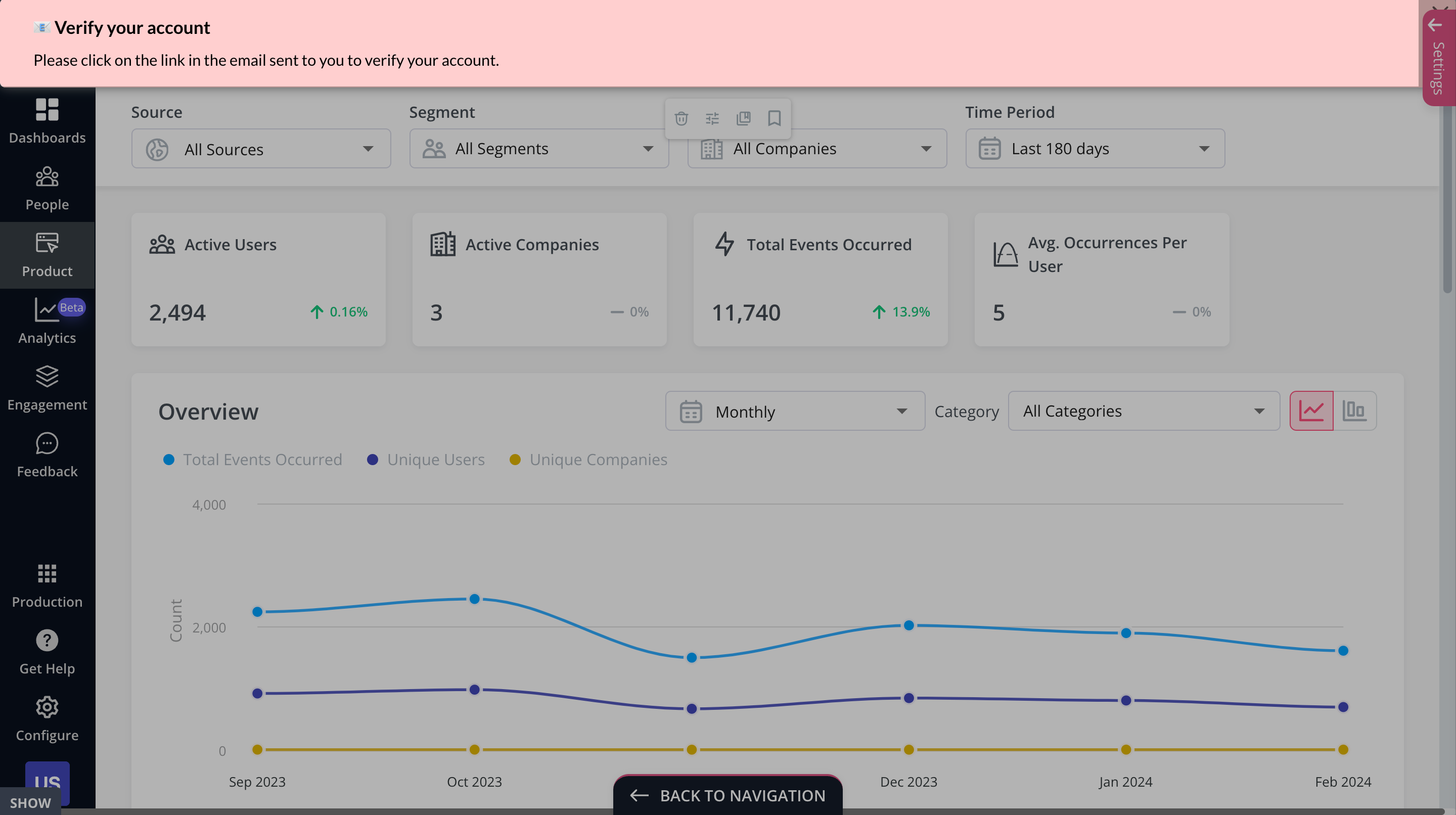
User activation conversion path best practices
After successfully getting users to sign up, your next target will be to lead them toward activation. This is the stage where the user unlocks the value in the set of persona-relevant key product features.
A successful activation conversion path is, thus, key to any long-term customer retention targets. Some ways to optimize this path include:
5. Deliver personalized in-app experiences
People use your product to solve specific problems. To that end, users with different goals use different parts of the product to achieve these goals.
Thus, one way to drive activation is by segmenting users and personalizing their in-app experience to make it easier for users to derive value from the product.
Use modals to collect relevant data about the customer’s profile, goals, etc., upon signup.
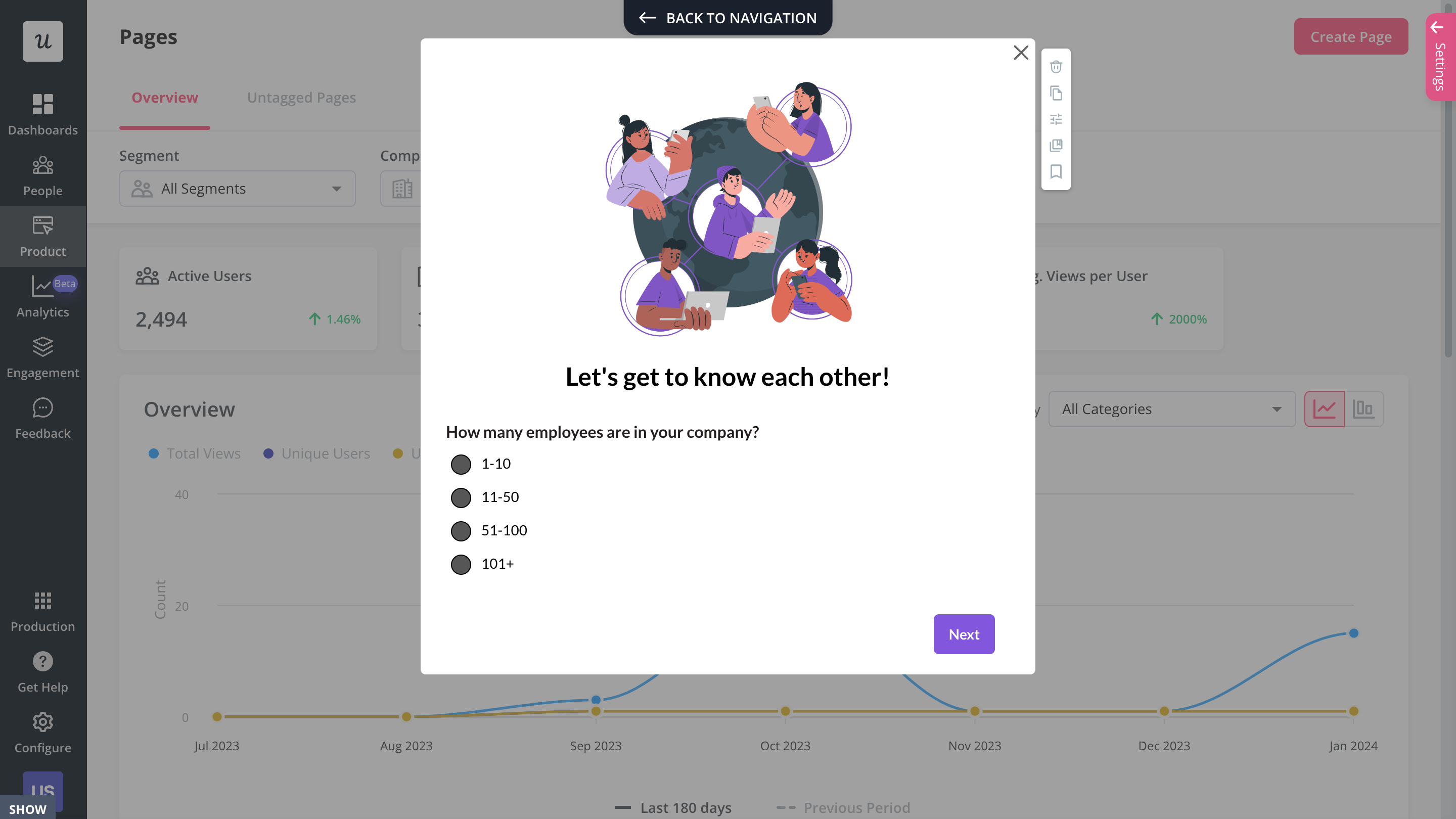
Then, use that data to identify their user segment, personalize their onboarding, and direct them to the most useful features for their needs.
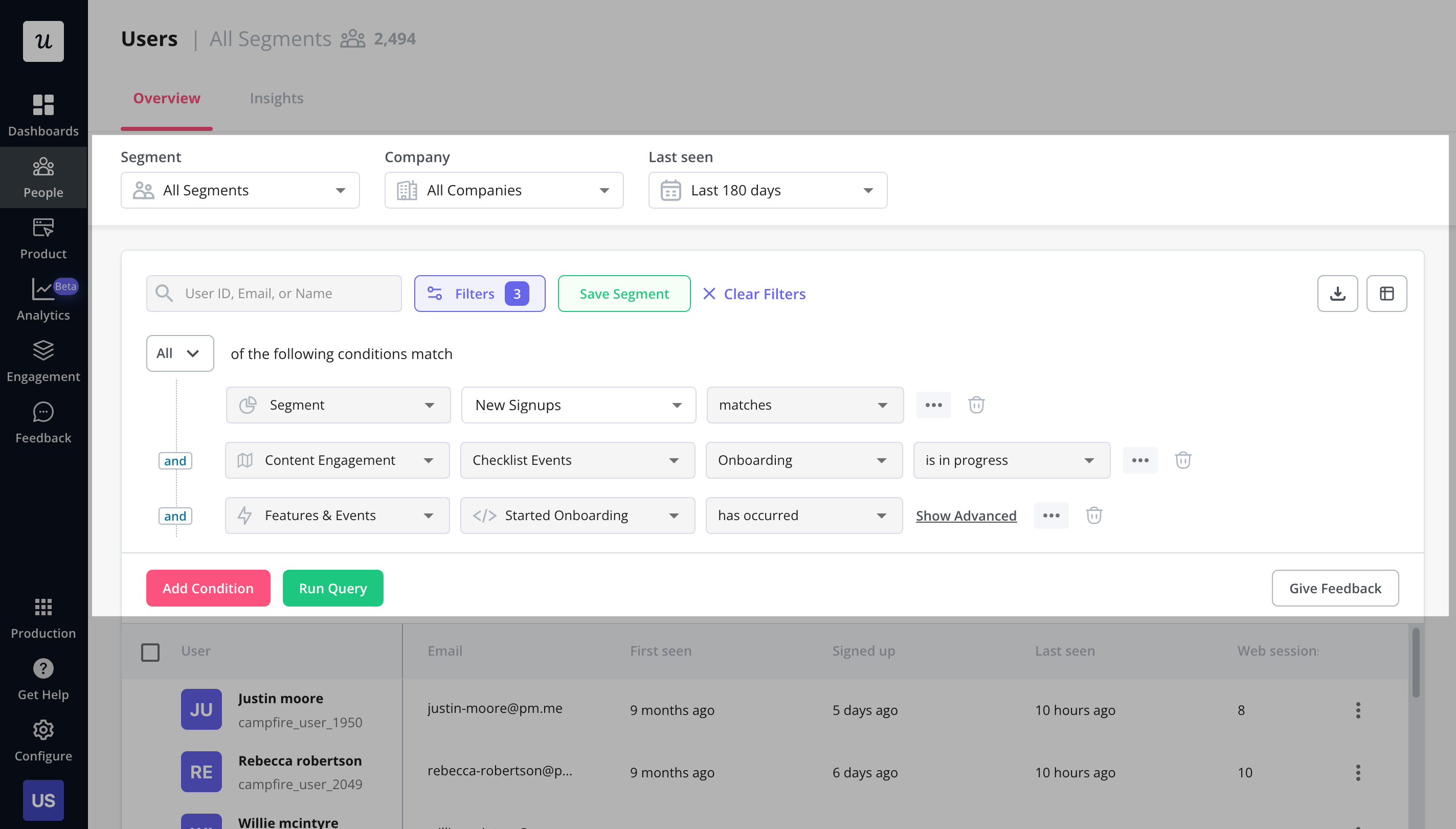
6. Use an onboarding checklist to drive users to the activation point
In addition to understanding your users’ needs, it’s also important that you understand what actions within your product will help them achieve their goals.
Armed with that knowledge, you can create checklists that prompt users to take those actions and move closer to activation.
Working with checklists also taps into a psychological effect known as “endowed progress.” By getting users to believe they’re close to achieving a goal, you increase their motivation to complete the goal.

Trial/freemium to paid conversion path best practices
Getting your trial users to commit to your product by purchasing a subscription package is the final, most important conversion path users must follow.
How can you optimize this path for your desired end?
7. Set usage limits for the basic features offered
In order to be valuable to the user, the free tier of your SaaS product must provide genuine value. It should address their pain points just enough to showcase your product’s benefits.
However, it’s also important that you do not give it all away for free. By setting usage limits, you can showcase your product while compelling the user to purchase a plan.
For instance, you may throttle the product experience, limiting the full power of your product to only those who commit to a premium plan.
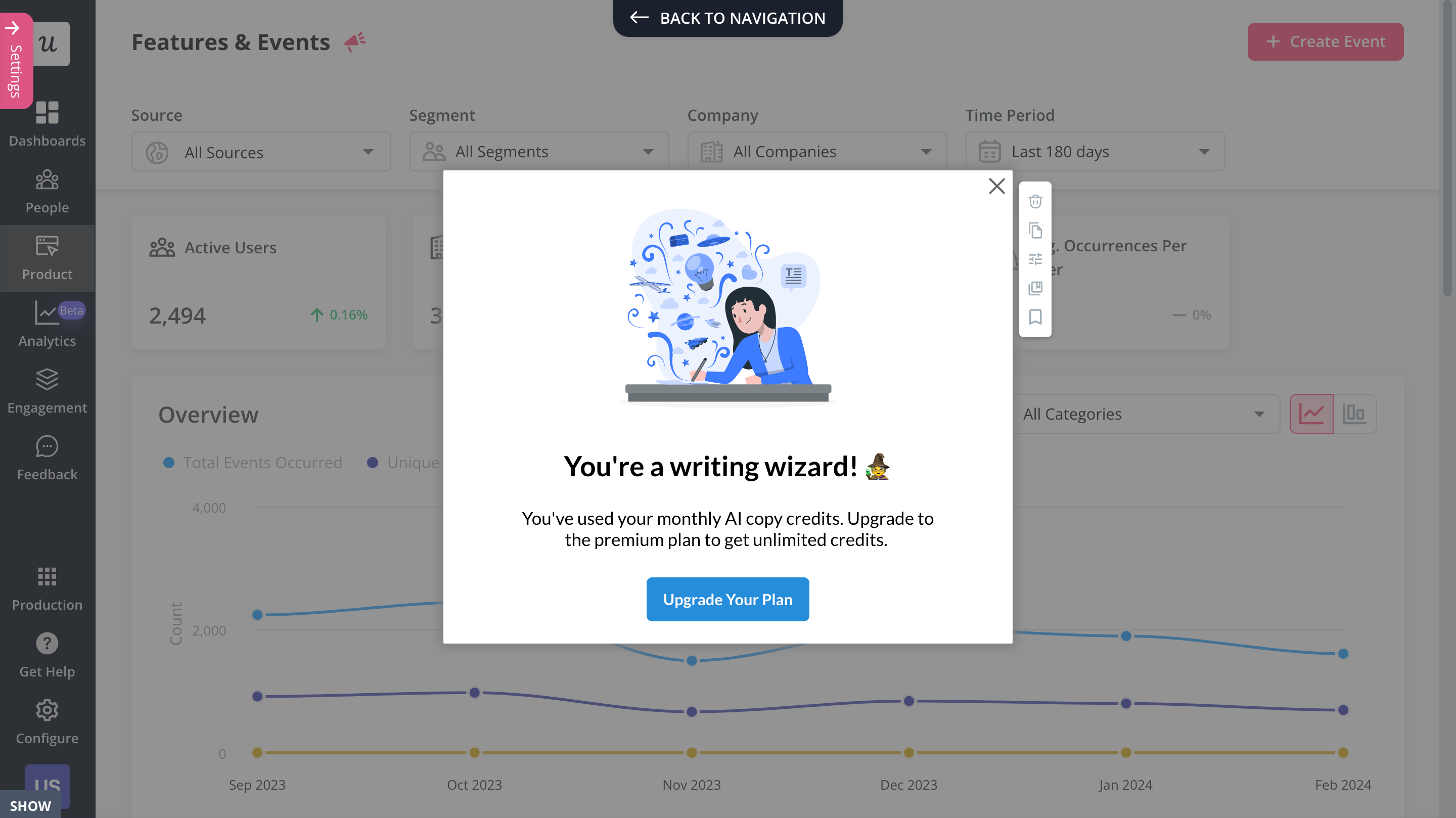
8. Trigger contextual upgrade prompts to freemium users
While prompting users to upgrade to a premium plan, it’s important to keep your message tailored to their needs.
A good way to do this is through contextual prompts. This means providing upgrade prompts within the context of what the user is doing in your app.
As a rule of thumb, your prompts should target users who have demonstrated interest in specific features or reached certain thresholds.
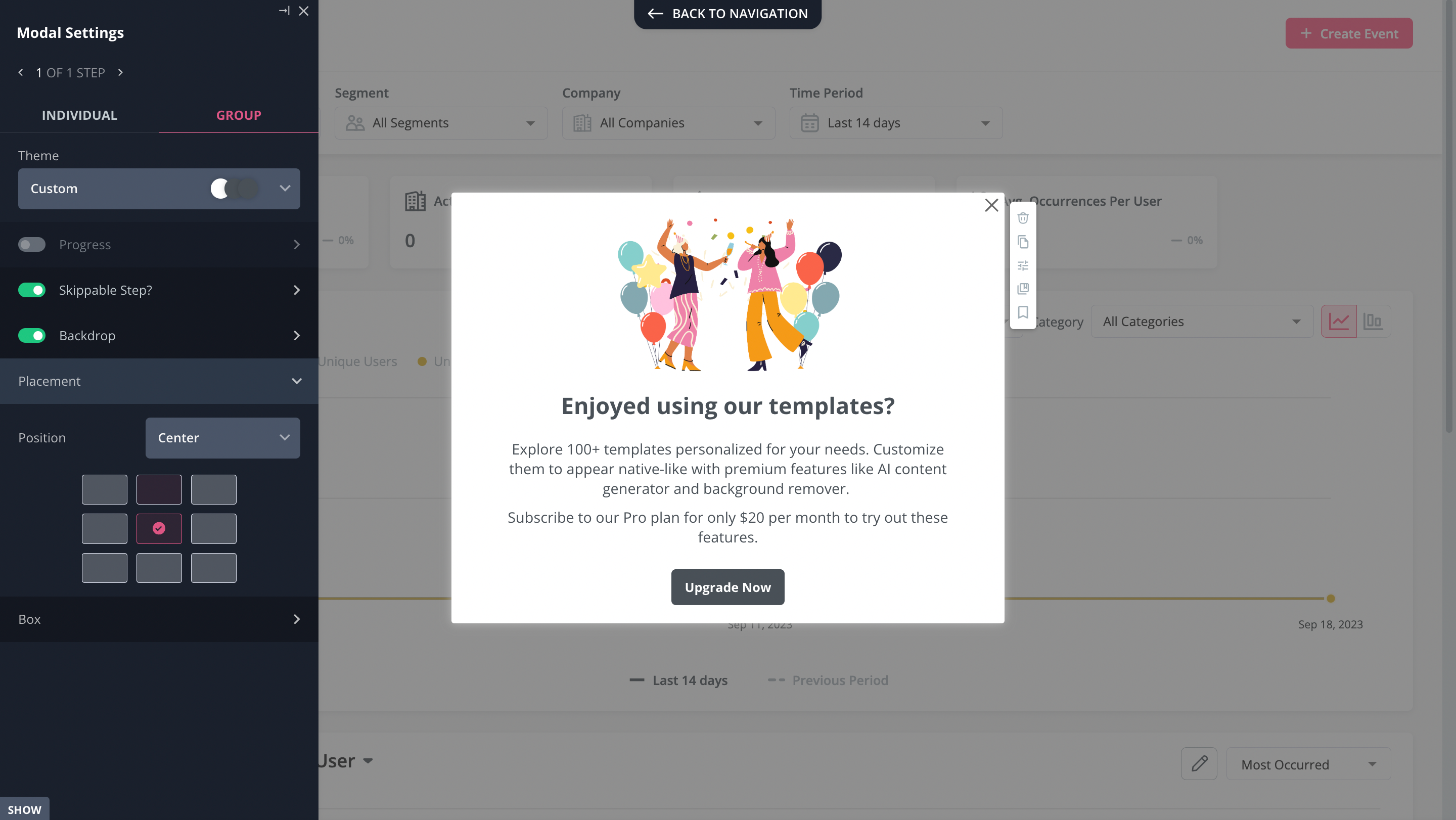
Good messaging is not salesy or annoying. Instead, it is helpful and encouraging. When you nail your timing and messaging, your upgrade offer becomes more convincing.
To create better copy, use Userpilot’s AI writing assistant feature. It lets you create copy from scratch, improve your existing message, and shorten/extend it.
9. Show freemium users what they are missing out
Seize every opportunity to showcase the additional features and benefits of your premium plans.
You can generate excitement by creating a sense of exclusivity around your premium plans. By tapping into your users’ Fear of Missing Out (FOMO), you can raise your freemium conversion rates.
For example, after correcting basic errors in their free plan, Grammarly highlights additional mistakes and errors that a user can sort out if they had access to the premium version.

10. Let users experience pro features for a short time
Yet another way to get users excited about the premium plan is by giving them a taste of the plan’s offering. You can give all users free access to the premium for a limited trial period, then downgrade them if they don’t wish to upgrade.
This strategy banks on the human desire to retain their slice of heaven at all costs. This is especially true if users are given enough time to truly get used to the premium offering.
Users who have gotten used to the premium experience will be unwilling to return to the bare minimum. Thus, this model nudges users to make a purchasing decision sooner.

How to analyze conversion paths to identify conversion rate optimization opportunities
Identifying legitimate conversion rate optimization opportunities is a conscious process. It involves you paying attention to your different conversion paths and analyzing them to see if they work as expected.
Let us now consider a few ways of measuring the success of your conversion path.
Set up conversion events to see how customers progress
Create clear goals for your different user segments. For each segment, there should be a defined path to conversion and clarity on what defines success at each stage.
What constitutes a target conversion event (goal) may differ based on your identified user personas, industry, or conversion path.
Tracking these conversion events via funnel analysis will grant you insights into users’ behavior along each conversion path and monitor where they are dropping off.
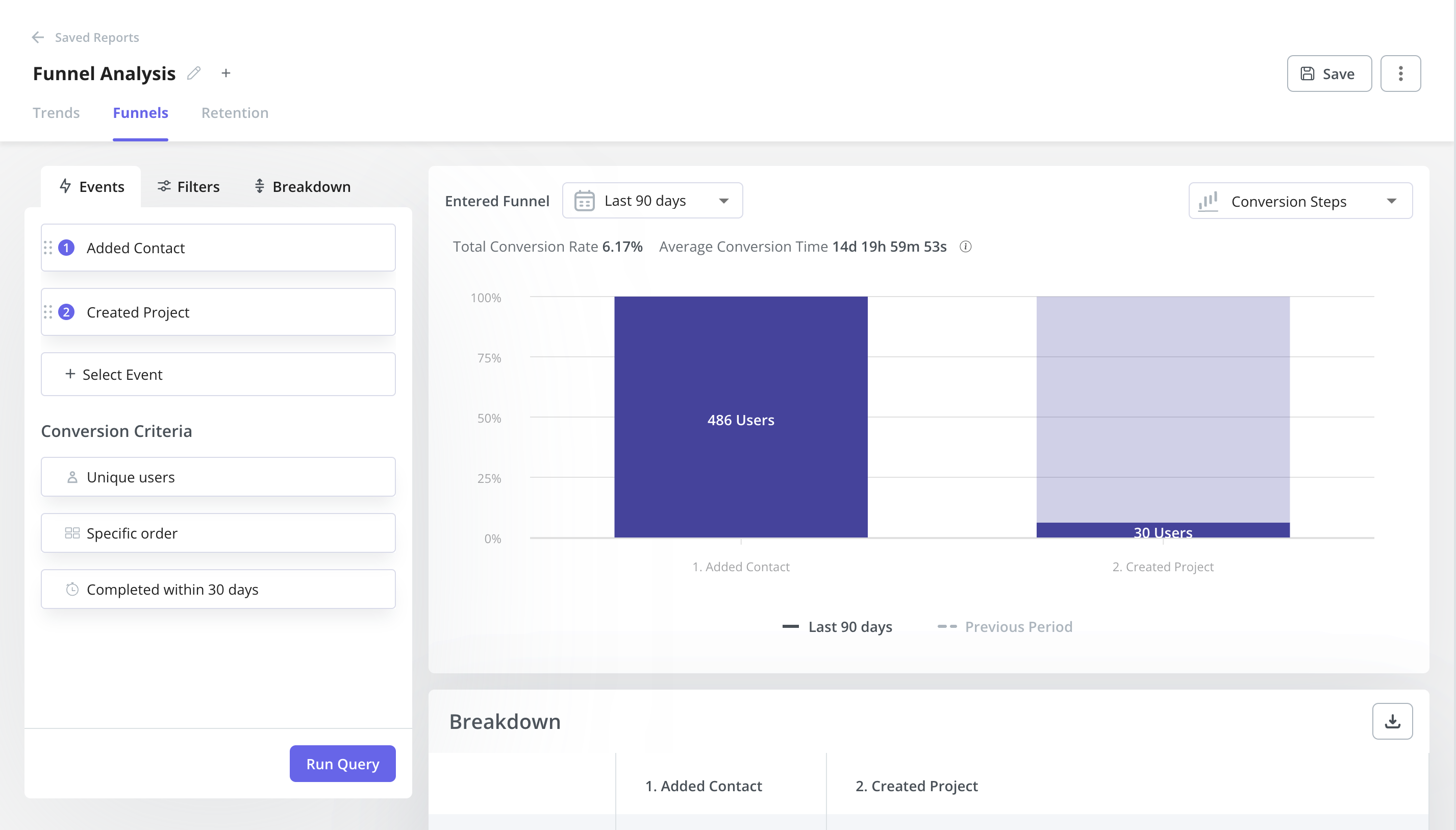
Compare how different conversion paths perform
Next, you need to track and analyze the performance of each conversion path. How many users are completing the required steps in the path? How many are converting at the different stages?
More importantly, though, you need to compare how users progress through the different conversion paths. What are the touchpoints for each path? What determines conversion in each path?
Essentially, you want to choose one of the starting points in your product and see how users progress from there. This comparison will make it easier to identify areas for improvement within each path.
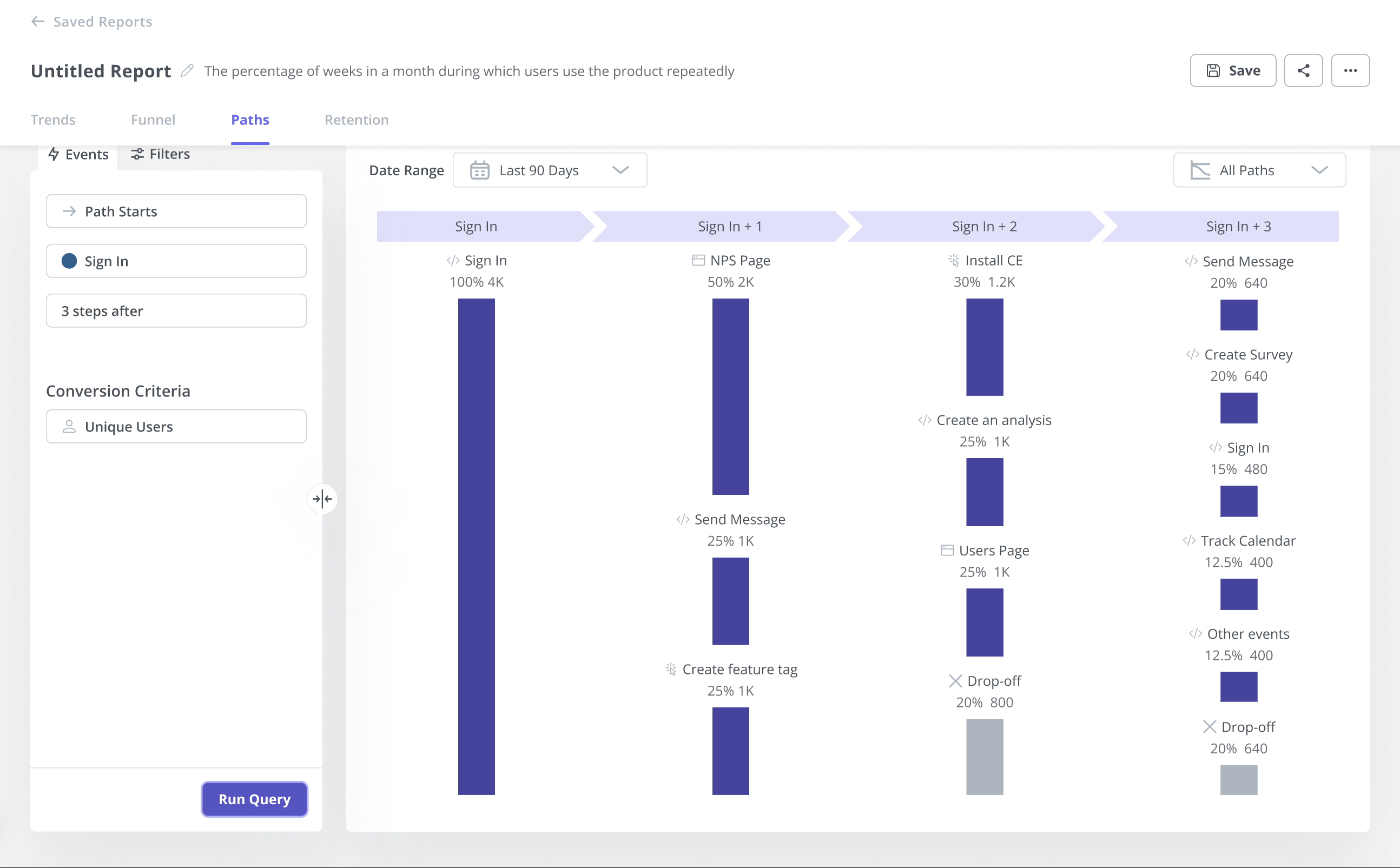
Identify drop-off rates of different conversion points
As you analyze the various conversion paths, look out for areas where users drop off and abandon the process. Try to identify the patterns or bottlenecks in these areas that hinder progress.
For instance, users who follow a path may drop off when they interact with a particular feature. A little investigation will tell you whether this is a bad UI issue with a simple fix or whether the feature doesn’t work as expected.
Finding the users who dropped off from the conversion path is no difficult job when using Userpilot. Not only does Userpilot let you conduct path analysis no-code, but you’re also shown the drop-off rate and total number at each step.
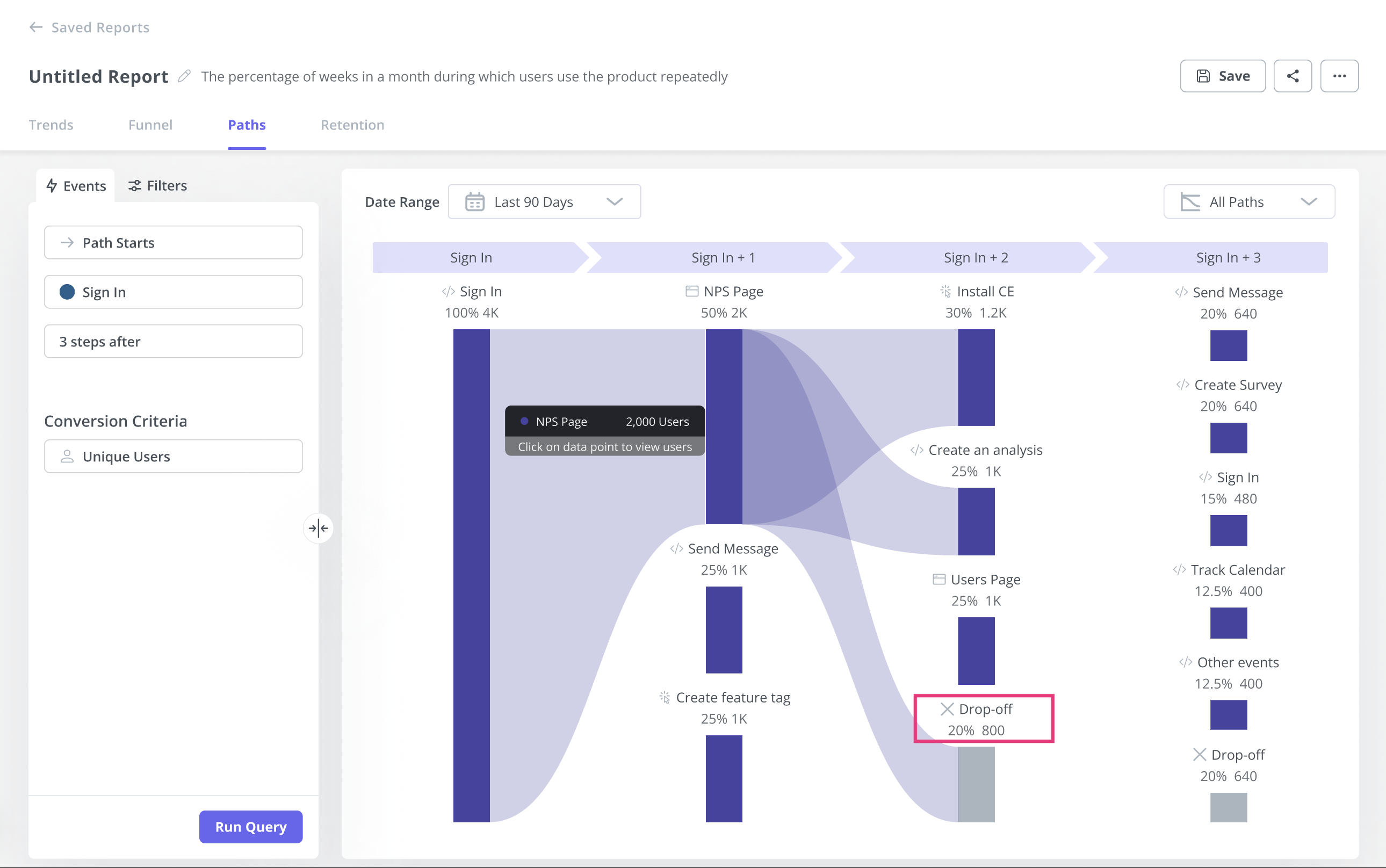
Identify reasons behind customer churn with exit surveys
By the time a user decides to unsubscribe from your product, it’s often already too late. While you may not be able to save these users, though, you can learn from them.
Use churn surveys to identify the most common reasons why users abandon your product. Are there too many bugs? Is the product difficult to use? Do they prefer your competition?
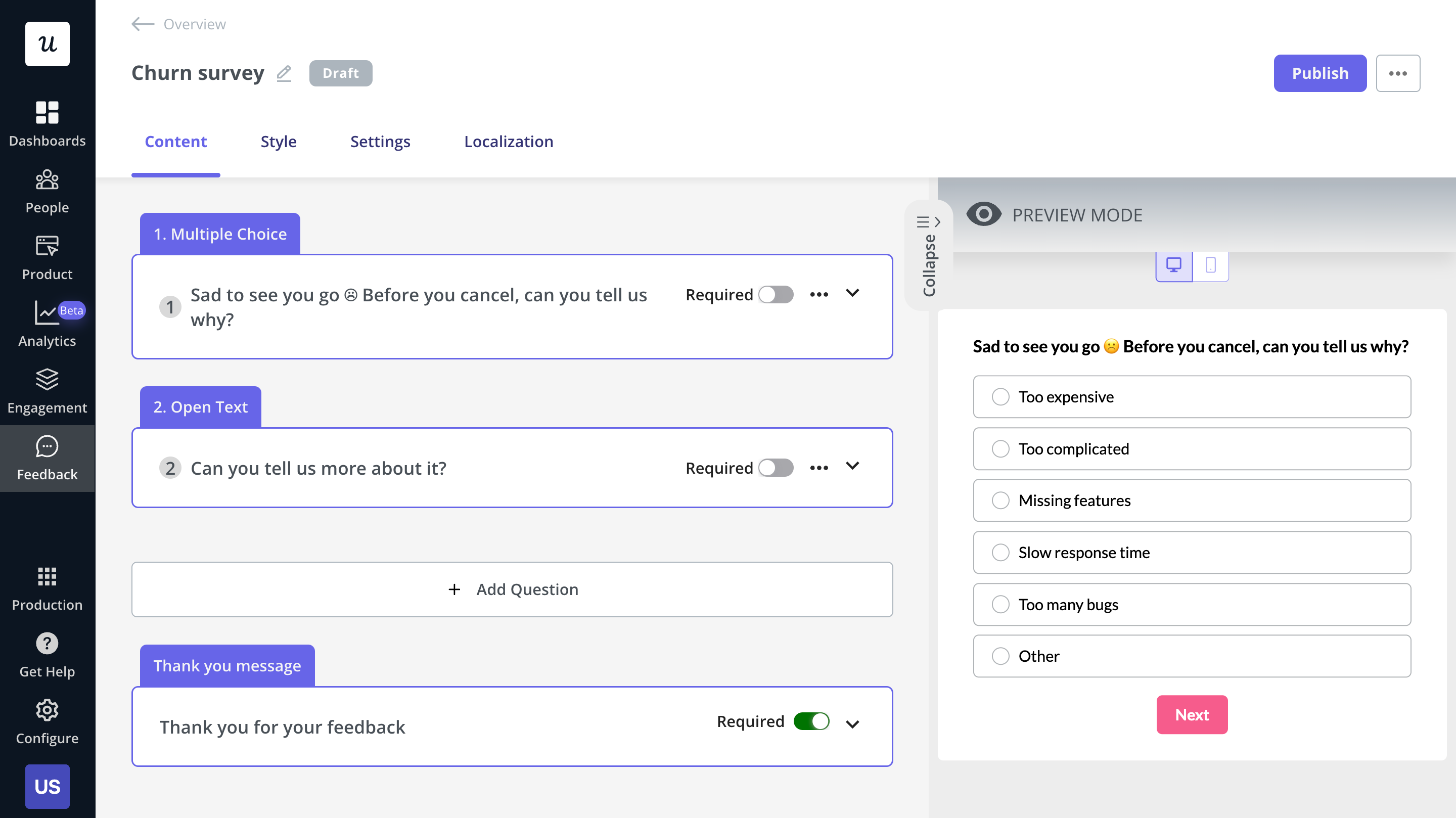
Fixing the issues you identify will improve the customer experience and, ultimately, improve your conversions.
Conclusion
There are many ingredients of any effective conversion path. An optimized path eliminates any friction, addresses your users’ needs, and satisfactorily demonstrates value.
Book a Userpilot demo today to learn of the many ways it helps you optimize your SaaS conversion paths for success.







